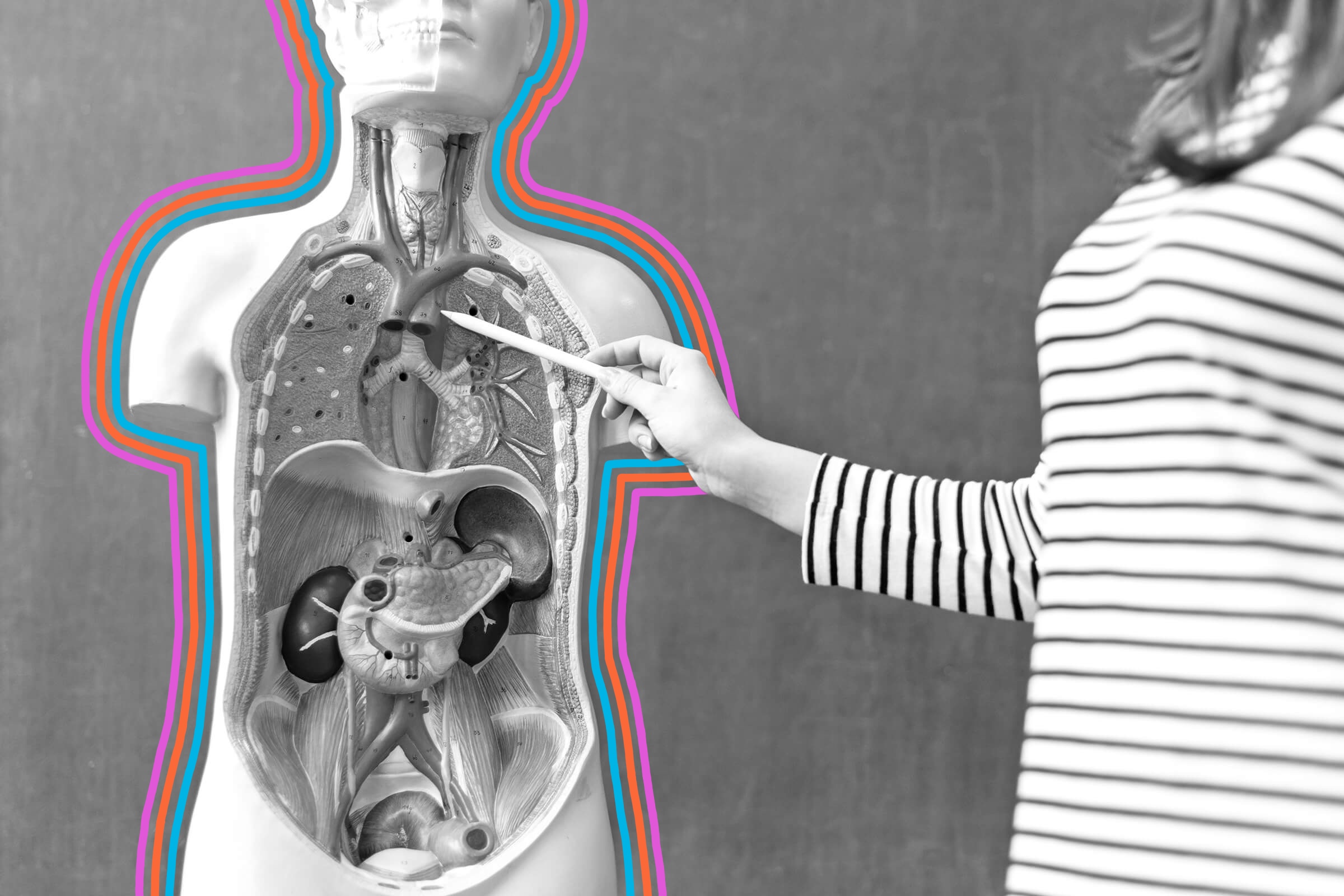Home cooks should have at least a basic understanding of food safety to keep their kitchens safe and their families healthy. In fact, when I started culinary school, we weren’t even allowed into the kitchen until we had passed our food safety exam. One of the fundamentals of food safety is proper hygiene, which includes…
So, it only makes sense to wash your food items as well, right? Well … yes, but only sometimes. There are several foods that don’t require washing or rinsing — here are 10 common examples.
1. Store-Bought Eggs
I have the luxury of getting my own eggs straight from my backyard hens. They’re super fresh but often encrusted with, ahem, stuff I don’t want to eat. You can bet I wash those thoroughly.
With store-bought eggs, that’s not something you’ll typically need to do. By law, all USDA-graded eggs must be washed and sanitized before they reach consumers. (Egg grading is not mandatory, however, so you should look for the USDA shield on your egg carton.) An additional wash is not necessary and could even do more harm than good. At best, you’re wasting a few precious minutes of your day by washing them, and at worst — according to the USDA — you may actually contaminate the eggs yourself. Go ahead and use those store-bought eggs as is, and don’t worry about scrubbing them clean.

2. Commercially Raised Mushrooms
Mushrooms also don’t require rinsing or washing if they are purchased from the supermarket. Most are grown on a sterile medium or “substrate” under tightly controlled conditions, so they’re already pretty clean. In the case of regular button mushrooms, that sterile medium is manure, so you’ll probably want to give them a quick wipe with a paper towel, but that’s all they really need.
That said, if your mushrooms look really grubby, you certainly can wash them if you want to. This idea is flat-out heresy to generations of cooks who believe it affects the mushrooms’ taste and texture, but pioneering food science writer Harold McGee put this common belief to the test in one of his books, outright soaking mushrooms for five minutes. He found that the myth did not hold water (forgive me), and neither did the mushrooms. It makes sense when you think about it, because mushrooms are mostly composed of water. Have you ever tried to soak up a spill with an already-wet sponge?
So while washing is by no means necessary, you can absolutely do it if you want to. Just be sure to spin them in a salad spinner to remove any moisture trapped in the gills or stems.
More from our network
House Outlook is part of Optimism, which publishes content that uplifts, informs, and inspires.
3. Prewashed Produce
Fresh produce is high on the list of things we really should wash before eating, especially if it will be eaten raw without cooking. Cooking is the stage that kills bacteria, which is why vegetables such as lettuce and sprouts so often cause foodborne illness.
While the USDA endorses washing or rinsing most produce before you eat or cut into it, there’s a noteworthy exception. If you regularly buy bagged or packaged fresh produce that’s labeled as “prerinsed” or “prewashed,” you can save yourself a trip to the sink. Those foods are meticulously cleaned during the production process and then sealed inside sterile packaging, so it’s safe to eat them straight out of the bag.
As with eggs, rinsing prewashed produce can increase the risk of contamination by introducing new bacteria.

4. Fresh Poultry
I know a lot of people who get a definite “ick” at the very thought of washing their holiday bird or a piece of raw chicken. Many force themselves to do it, though — gloves are your friend! — because chicken is strongly associated with the risk of illness.
Here’s the thing: It’s true that nasty bugs such as salmonella and E. coli are often found on chicken, but washing them doesn’t help a whole lot. Salmonella is difficult to wash off, for example, and with E. coli, even a small number of surviving bacteria can still make you sick. Cooking to the recommended temperature of 165 degrees Fahrenheit is the only way to make sure your chicken is safe.
Washing it has the exact opposite effect because if any bacteria are present on your chicken, they will spatter all over you and the area around your sink. That increases the risk of transferring those bacteria to other foods or utensils, so it’s really not worth the risk. The only time you should rinse chicken is after you’ve brined the bird, simply because the excess salt needs to be rinsed off.


5. Fresh Meats and Fish
Fresh meats and fish are also poor candidates for washing, largely for the same reasons as raw chicken. Take a look at the surface of that chop or steak you’ve just pulled out of the refrigerator: It’s porous and filled with crevices where it was sliced from a larger cut. The most diligent washing you can muster won’t get the bacteria out of them, and you’ll likely spatter bacteria around your kitchen while trying.
There are other, equally pragmatic reasons for not rinsing meats and fish. Adding unnecessary moisture is the biggest one. Even after blotting your chops or filets carefully on a paper towel, they’ll still retain some added water. That can prevent the breading or batter from sticking to your fish or chicken-fried steak.
Even worse, it inhibits browning when your steak or chop hits the pan or grill. That moisture must be converted to steam and dissipated before browning can even start, so your steaks and chops will lose out on the flavor boost they would otherwise get from a good, hard sear.

6. Rice for Risotto
A lot of rice recipes call for rinsing the rice before you begin. I’m a big advocate of that technique in my cooking classes, as well. Rinsing the rice until its water runs clear helps it cook up light and fluffy. Rinsing can substantially reduce rice’s arsenic content, too, if you eat enough of it for that to be a concern.
That said, this step is entirely optional. If the brand of rice you buy cooks up fine without rinsing, keep doing what you’re doing. There are also a couple of specific cases when you absolutely don’t want to rinse your rice. If you’re making a batch of risotto or paella, or even a much less-glamorous rice pudding, you want that extra surface starch to stay on your rice. It’s what helps give the finished dish its texture, and your meal won’t be the same without it.
7. Prerinsed Quinoa
Like rice, quinoa is something that recipes encourage you to rinse. There’s a good reason for that, because quinoa is naturally coated with compounds called saponins that foam up like soap (that’s what the name means) and taste bitter. They’re intended to deter animals and insects from eating quinoa, and they certainly taste unpleasant to humans as well.
The good news is that they rinse off pretty easily, which is how quinoa became a staple food in parts of South America. If you’ve bought your quinoa at the supermarket, though, you usually don’t need to worry about it. Brands sold in North America are typically rinsed and dried before they’re packaged for sale, so it’s a step you can skip when you’re whipping up your next grain bowl.
Prerinsing makes quinoa more convenient to cook and eat, and convenience is what drives the market. When in doubt, give the packaging a once-over. If it says anything about being prerinsed, or “no rinsing necessary,” or just plain omits that step from the instructions, you’re good to go.

8. Frozen Produce
Fresh produce is a prime candidate for rinsing or washing, as we’ve already mentioned, but the same doesn’t hold true for frozen produce. At first blush this may seem odd: It’s the same plant, so why rinse fresh broccoli, for instance, but not frozen?
The answer is that frozen vegetables are processed with food safety in mind at the manufacturing facility. They’re not only washed (a lot more thoroughly than you could at home), but they’re also parcooked or “blanched” to help preserve their color and switch off the enzymes that cause spoilage. That’s enough to kill most bacteria, and any that remain can’t reproduce at freezer temperatures. So giving them a further rinse at home is pointless.
The only exception to that rule is if you’ve forgotten to seal the bag, and the veggies are crusted with ice. Rinsing the ice away will show you whether your food is freezer-burnt, and also reduces the likelihood of having off flavors from the freezer.
9. Packaged Pasta
Pasta is a less-obvious candidate for this list, because as a shelf-stable dried food, it’s already food safe by definition. The only reason some people feel impelled to give it a quick rinse is that sometimes dried pasta seems to have loose, powdery starch on the noodles or in the package.
It’s not something you need to worry about. The extra starch comes off quickly enough in your cooking water anyway, and in fact, some famous recipes — like cacio e pepe — rely on starchy pasta water to help make the sauce. A bit of extra starch, in that case, is actually a positive.
You should especially not rinse pasta after it’s cooked. Freshly cooked pasta has a starchy, gelatinized surface that helps your sauce cling to the noodles, instead of pooling on your plate. The only time you should rinse pasta after it’s cooked is if you’re going to be eating it cold or saving it for later. Then, rinsing helps keep the pasta from clumping together as it cools.

10. Most Canned Foods
Most of us, even dedicated foodies, keep a few kinds of canned foods in our pantries. They’re convenient to have on hand: Canned beans lend themselves to impromptu dishes a lot better than dried beans, and canned potatoes are ready to slice into a hot skillet at a moment’s notice for home fries.
Most of these foods don’t need to be rinsed. They’re food safe and thoroughly cooked when they leave the cannery, and the liquids inside the cans are usually salted water (for vegetables) or a light sugar syrup (for fruit). Yes, there are a few preservatives as well, but they’re pretty innocuous and not a lot stays on the food after it’s drained.
Canned beans are a judgment call, depending on the recipe you’re making. Often a quick strain is all they need, though some recipes may call for rinsing away the thick liquid from the can. It’s just water thickened with the beans’ own starch, so you don’t need to compulsively wash it away. In fact, the liquid from chickpeas (aquafaba) is a versatile vegan ingredient in its own right.













